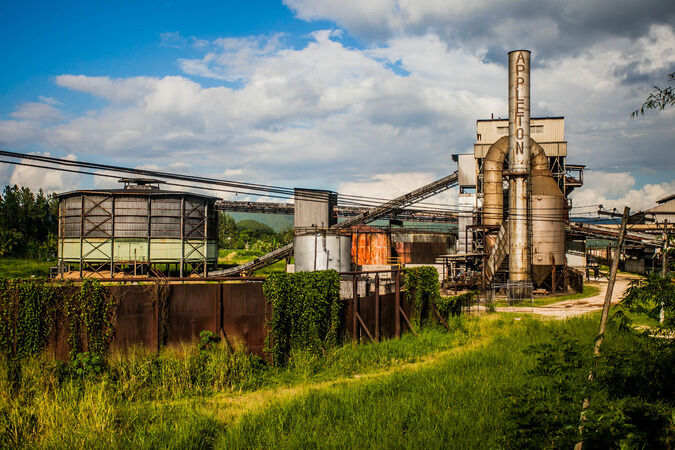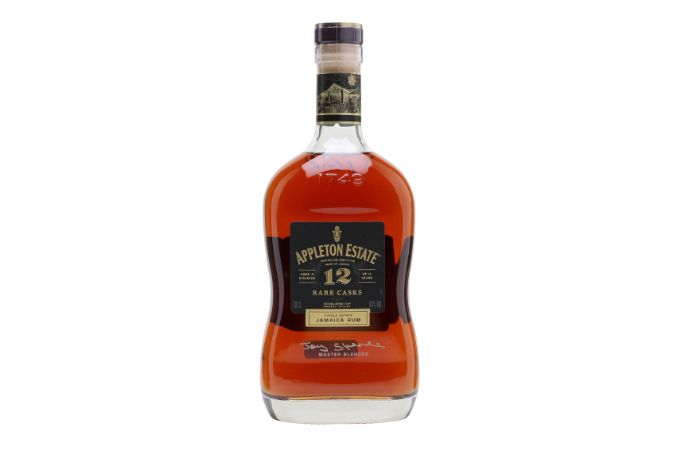Did you know that Jamaica has the most rum bars per square mile in the world? It’s an image that is hard to muster – until, that is, you visit Jamaica. Driving from the south-western capital, Kingston, through St Catherine, Clarendon and up to the northwest, Trelawny, between jelly coconut and sugarcane stands – and the rainbow of multicoloured houses along the way – you’ll find regular roadside bars selling locals and tourists one of Jamaica’s most popular exports.
On first mention of Jamaican rum, most people’s minds will go straight to Wray & Nephew – and rightly so: you’ve most likely seen Jamaica’s star rum in your local corner shop or supermarket. But the white overproof is also served (alongside Rum-Fire) in those many roadside rum bars with a myriad of mixers (most famously, Ting) or in a punch, of which each bar or distillery’s recipe is a closely guarded secret.

Ask anyone familiar with Jamaica’s rum style to describe its most distinctive characteristic and most will come back to you with the same word: funk. Why? Because Jamaican rum’s fascinatingly idiosyncratic methods of production can often result in high-ester (‘ester’ meaning an organic compound related to flavour intensity), high-character and high-drama rums, which can often make them easily distinguishable in blind tastings.
‘I always get this banana bread character with Jamaican rum,’ says Dawn Davies, head buyer at The Whisky Exchange. ‘It doesn’t matter if it is higher-ester style, or if you’re looking at ones that don’t use muck and dunder, you get this little hint of banana… this tropical note which is a unique pointer.’
On the ground, the visual, physical and other-worldly aspects of Jamaican rum are as big a draw as the flavour: the thickness of the air; the often unpolished and unabashed brutalism of its set-up; the sense of an invisible barrier around each distillery’s grounds; the films of bacteria floating on top of fermentation tanks, and a feeling that you’re wearing it when you leave – in essence, that this liquid is as much about where it is made, as how it is made.

The fundamentals of Jamaican rum
The story of rum in Jamaica starts with the arrival of Christopher Columbus and the sugar he brought with him in 1494. By the late 19th century, there were over 100 rum distilleries operating in Jamaica – fast-forward to the 21st century and you’ll find just six: Appleton, Worthy Park, Hampden, Long Pond, Clarendon and New Yarmouth.
Jamaican rum can be made from sugarcane juice, cane syrup, molasses, sugar or a combination of any of the above; it must be distilled in copper pots and a lot of it is made in double-retort pot stills; and, if it’s aged, it does so in oak barrels in Jamaica (more on this last detail later). As of 2016, Jamaica has had a geographical indication (GI), meaning anything labelled as ‘Jamaican rum’ must be from a distillery that is based within the island’s limestone aquifer water basin. So far, so straight-forward.
On the ground, the visual, physical and other-worldly aspects of Jamaican rum are as big a draw as the flavour
Slightly more nuanced is a process term you’ll hear a lot in relation to Jamaican rum: ‘marque’. A distillery’s marque refers to one of a multitude of rum distillate recipes made by distilleries, and these are differentiated by a series of letters (DOK, for example, is a Hampden Estate marque). These marques are then blended to create the final rum.
Now for the fun stuff: say hello to ‘dunder’, and cane vinegar. While not all Jamaican rums use these methods, these techniques can change the game when it comes to fermentation and flavour. Let’s start with dunder, which is basically stillage (aka, what’s left in the pot still post-distillation): not dissimilar to a sour mash in bourbon production, it can be used in future fermentations to give the final flavour a boost. Then there’s cane vinegar, which can be seen in action during fermentation at the likes of Long Pond and Clarendon distilleries: made from cane juice, this addition can add a further layer of funky flavour.

Digging into the terroir
But there are other factors and methods that speak to Jamaican rum’s sense of place more closely. Perhaps the fact that Appleton Distillery’s micro-climate means that it has daily rain showers at 2.30pm; or that the island’s mineral-rich limestone water is not only used to grow the sugarcane but also in the final liquid to give it a softer edge.
A method which makes some Jamaican rum so inextricably linked to its locality is ‘muck’, something particularly prevalent at Hampden Estate. It is, in essence, the contents of a pit, which can be made up of decaying vegetation, old fermentation residue, surrounding fauna and flora, and whatever else the distillery adds for composting (thankfully, not including animals). Having been lucky enough (well, I think so) to stand directly above such a pit, I can attest to one thing: it absolutely honks. But when added to the fermenting liquid, it gives it a unique and high-ester character that links this liquid so closely to its surroundings.
Let’s not forget yeast. While many distilleries around the world use commercial yeast in their fermentation, Jamaican rum uses ambient yeasts, which can be found in the surroundings of the distilleries, and produce flavours in the rum which are particular to their immediate flora, fauna and climate.
What about Jamaican rum’s future? Well, while most rum is made using a mix of sugarcane varietals, Davies points out that Worthy Park’s work in producing single-estate rum could be the beginning of an important practice from a traceability perspective. It shows that they’re ‘really caring about that journey from cane to glass’ while also giving distilleries an even stronger thumbprint in relation to their location.
There are also some more pressing discussions around ageing – specifically around where Jamaican rum should be aged (aka in Jamaica or not) – which are putting the category at a controversial point of crux. For Davies, where Jamaican rum is aged is integral to the category’s character: ‘There is a sense that “place” is what happens in the barrel. If we look at it in the context of wine, it is so important – once you remove [it] you fundamentally change what you’re trying to protect.’ For a spirit that feels so holistically, culturally and chemically intertwined with its surroundings, I wholeheartedly agree.
4 Jamaican rums to try

Worthy Park Single Estate Reserve
Deep in Jamaica’s Lluidas Vale, Worthy Park is surrounded by lush terrain. This, its first official premium bottling, is a celebration of single-estate rum. Aged in bourbon casks, this rum is bursting with ripe tropical fruits, vanilla and a characterful savoury edge.
£46.95, www.thewhiskyexchange.com

Hampden Estate 8yo
From Trelawny’s mega-fan-followed Hampden Estate, this eight-year-old is an excellent introduction to what muck and dunder can do to a rum’s character – while remaining undoubtedly Jamaican (without blowing your socks off). Expect that familiar banana note, plus juicy tropical fruits and baking spices in this molasses rum.
£62.25, www.thewhiskyexchange.com

Appleton Estate 12yo Rare Casks
My favourite of master blender Joy Spence’s Appleton bottlings, this 12yo carries some serious richness, with notes of dark chocolate, toasted oak, coffee and a refreshing hit of orange peel. Works well with cheese (especially Gouda).
£43.25, www.thewhiskyexchange.com

Wray & Nephew Overproof Rum
You really can’t go wrong with a bottle of Wray & Nephew Overproof in your arsenal. The clue is in the name: at 63% abv, it will get the party started. I suggest mixing it in an overproof Daiquiri or diluting it with Ting for a proper Jamaican experience.
£29.45, www.thewhiskyexchange.com








